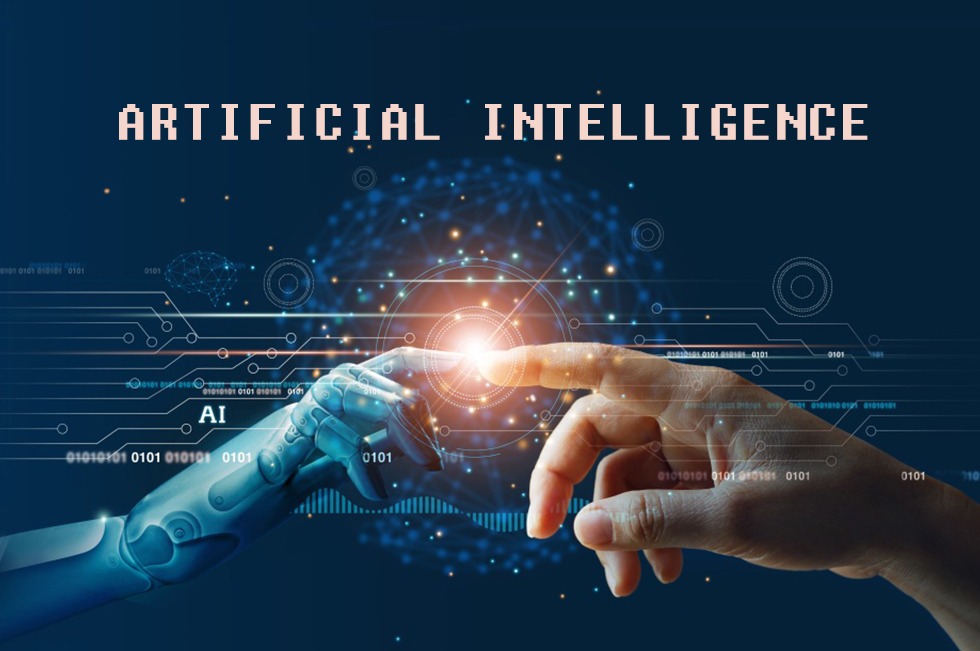Moving on to the next topic in our list, today we are going to talk about “Artificial Intelligence”. Artificial Intelligence is the fastest moving technology, which has an impact on every industry in the society and it is making significant progress in the marine industry, with the potential for autonomous systems to be introduced, processes to be made more efficient and safe to be improved.
What is Artificial Intelligence?
Artificial Intelligence usually refers to Machine Learning, where computers learn over time by applying algorithms that will improve with experience. AI in the shipping industry can be utilised to enhance shipping routes. AI can determine the best course at the best speed. Expert systems, natural language processing, speech recognition, and machine vision are examples of artificial intelligence applications. Because vast volumes of data are generated every day in the form of shipping documents, emission data, operating metrics, and other documentation, the marine industry is excellent for machine learning algorithms. All of these aspects can be properly dealt with by AI systems. It’s also important to remember the high expenses associated with certain shipping procedures, where even minor improvements might result in significant savings.
The Benefits of Artificial Intelligence in Shipping for a Better Future
Improved analytics for decision-making, automation, safety, route optimization, and higher efficiencies are some of the amazing benefits of AI in the shipping industry.
- Advanced analytics – Advanced analytics are used to make valuable business insights from many data sources. This will help ensure your decisions are based on data-proven methods.
- Automated equipment -AI and automation play an important role in the shipping industry. Machine learning capabilities will help in the analysis of historical data by considering such things as weather patterns or busy/slow shipping seasons. Automating processes can help identify problems before they occur.
- Safety and improved security – Accidents can be reduced using artificial intelligence. AI can also be used to detect threats and other malicious activities.
- Route optimization – Route optimization would build optimization models to determine the most efficient route to take. With the help of AI, a prediction of the best path with minimum fuel consumption, and considering the weather can be calculated.
- Performance forecasting – Performance forecasting could take the relationship between speed and power to predict changes in performance due to underwater fouling. You could use historical data to understand what is the rate of the degradation of the performance of the vessels.
Working principle of artificial intelligence/ How does Artificial Intelligence work?
There are four types of Artificial Intelligence:
- Reactive machines,
- limited memory,
- Theory of mind and
- Self-awareness.
Reactive Machines: Reactive machines are the most basic type of Artificial Intelligence system. This means that they cannot form memories or use past experiences to influence present-made decisions; they can only react to currently existing situations – hence “reactive” A perfect example of a reactive machine is IBM’s Deep Blue, which memorably defeated renowned chess grandmaster Garry Kasparov in 1997. Reactive machines are a narrow field of artificial intelligence. They are great at playing specific games and following a prescribed set of rules, but they are useless in almost all other situations. They will always generate the same response when given a specific set of inputs, which makes them highly trustworthy, but they can’t interact with the world in what we would describe as an intelligent manner.
Limited memory: Limited memory allows machines to look some way into the past to make better decisions. For example, an autonomous ship will measure the speed and heading of other vessels in the area to establish the closest point of approach. It’s not possible to assess the speed and heading in a single moment; the machine must log information over time to make an assessment. By combining dynamic data from the real world environment with static data (e.g., a chart), the vessel can take appropriate action. This technology is already widely used in autonomous cars, which interpret the world around them while they are on the move and react accordingly.
Theory of mind: As we build machines that become closer and closer to the human brain, it makes sense to start borrowing from psychology to model what these machines will look like. A theory of mind requires machines to be able to build representations of the world that take into account the knowledge, beliefs, emotions, and intentions of others. This requires machines to understand that humans or other machines may hold different beliefs and act differently towards them.
Self Awareness: Self-aware Artificial Intelligence involves machines that have human-level consciousness. This form of AI is not currently in existence but would be considered the most advanced form of artificial intelligence known to man. Facets of self-aware AI include the ability to not only recognize and replicate human-like actions, but also to think for itself, have desires, and understand its feelings.
Shipping is changing and with the speed at which technology solutions are being created for the industry, it would not be wrong to term this period as a rebirth of one of the world’s oldest industries.
Concluded.






